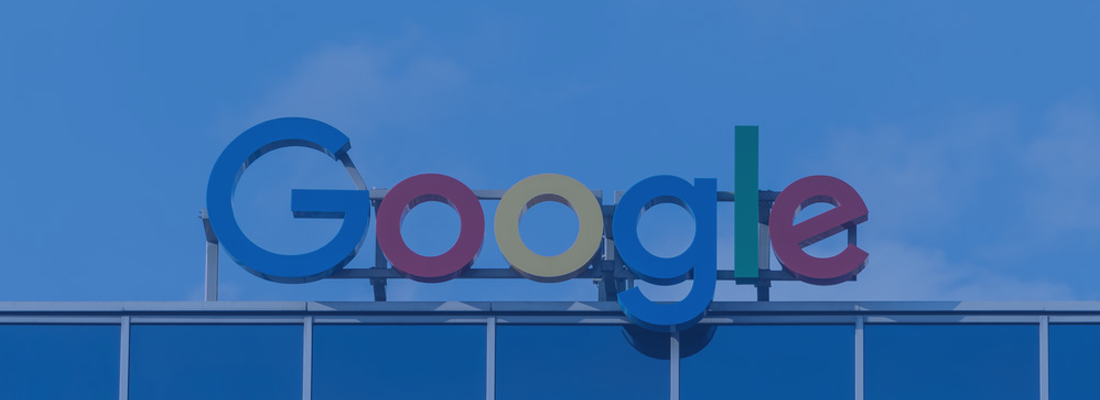
Posted On : 01 October 2020
Good content not only attracts the audience, but it can also increase the appearance of a website in the online world. Website owners realize that blogs and other content of their site are essential for marketing. But how can you create the perfect content that the search engine can find and rank higher?
In SEO, content optimization is the process that makes the content more visible on the web. Optimized content is picked up by the search engine robots and ranked higher on the page as compared to the non-optimized content. But there is a lot required for optimizing a content. We will take you through all of the essential details in the following blog. So stick with us and read on.
Title Optimization
What is a Title Tag?
Anyone learning about Search Engine Optimization comes across the title tag. A title tag is basically an HTML element, which outlines the title of a specific web page. Title tags are visible in the search engine results pages (SERPs) for a particular result as headlines that can be clicked. In its essence, a title tag is an accurate and concise overview of the content on the page.
Title Tag Code Structure
Title tags are present in the head section of the HTML code. They usually appear as:
<head>
<title>Title</title>
</head>
Title tags appear everywhere from search engine results to social media posts and browser tabs.
Importance of Title Tag in SEO

SEO Services company recommend optimization of the title tags because they allow the readers to perceive what information will be present on the page when they click the heading. For the search engines, the title tag shows the relevancy of the web page when a query is presented in the search bar. In this way, if your title tag is relevant to a particular search query, your web page will be ranked higher on the SERP.
Where does it show in browsers?
Search engines use title tags for various purposes. One of them is the display, and another is the ranking. Every page has an HTML title tag, but its use can differ. Many browsers display the title tag at the top of the browser window in the reverse bar. This is usually common in Firefox, Safari, and Internet Explorer. On the other hand, Chrome shows the title at the top of the tab for every page.
Recommended Title Length for Google
SEO agencies will tell you that there is a strict number of pixels and characters that should be used for the title tags. However, this is not entirely true. Google mostly shows the title tags in their full length when they are about 65 – 70 characters long. This is approximately 580 – 600px. However, in some cases, Google only shows 55 characters, which is 430 or 540px.
Naturally, Google tries to fit as many characters as it can to align with 600px. It also tries to display the last word. So if the last term of the title is long, it is more likely to be trimmed. If the title employs narrow characters, Google will fit more of them in the display. Furthermore, the title length gets a bit more complicated in mobile results because it depends upon factors like display size.
Keyword Addition
An essential tip in formulating the title tags is used to the right keywords. Thus, it is first necessary to find the keywords relevant to the brand and niche. By using keywords, you can help the search engine to recognize your title tags. It is recommended to add the keywords at the start of the title.
However, it is crucial to remember that Google does not recommend stuffing the tag with loads of keywords. The search engine will pick the title as spam. Accordingly, stuffing can negatively impact the title's SEO.
Brand Mentions in the Title Tag
Use of the brand name in the tag can also make the content more credible. Especially if your brand is prominent in the market, it can provoke the users to click on it. However, it is better to add the name at the end of the title to maintain its readability.
Title tags should also be cleaner, so it is recommended to avoid the use of delimiters like the hyphen. If your brand has the phrase "SEO – Singapore" in its name, it can be used as "SEO Singapore" in the tag.
Use a Unique Title for Each Page
Google also expects title pages to be unique and distinguished. The use of generic words like "profile" or "home" only makes the titles less worthy of being shown high on the SERP. Especially if your market is full of businesses with similar products and services, unique titles can help your company stand out. The main goal of unique titles is to boost the click-through-rate and prevent duplication of the content.
Reason for not Always Being Displayed in the Google SERPs
It is not always possible that your SEO title will appear on Google. At times, the title will not even show them in the same template as you have set. There are various reasons for such a problem to occur. For instance, your source code of the site might be wrong. The source code should contain only one title meta tag. So if the title is missing in the code or there is more than one, it will not display in the search engines.
If the Google cache is outdated, the problem can also appear. It can take a week for the search engine to index the new changes in your site. In many cases, Google does not pick the title when it doesn't meet its benchmarks of quality. In this regard, it is best to replace or change the title.
Meta Description Optimization

Importance of Meta Descriptions
As an HTML element, a meta description summarizes, as well as describes, the content present on the page for the users and search engines. It is basically an organic ad text that helps the search engines to identify what is present on the page. Meta descriptions also impact the organic search results because they can prompt the reader to click on a site and view the page.
Meta Description Code example
<head>
<meta name="description" Content="Here you will write your meta description.">
</head>
Length of Meta Description
Meta descriptions can be of varying length. However, Google usually prefers characters from 120 to 158, that is 920 pixels. It is recommended that meta descriptions stay within 50 to 158 characters, so they can fully appear in the SERPs but also be descriptive enough.
Is it a Google ranking factor?
It was announced in 2009 by Google that meta descriptions are not an SEO factor, influencing its ranking algorithms. However, meta descriptions are known for affecting the click-through-rate of Google.
Use of keywords
Even though the meta description does not impact the search engine ranking, it is better to include a keyword in the description. Search engine results highlight the terms that are same or similar to the queries. Users can notice these keywords and click on the site that appears to answer their questions.
Make it Unique
Each one of the meta descriptions should be unique. It should not contain similar phrases or language. Duplication can impact the credibility of the web page.
Is it okay to not write meta descriptions?
You don't have to write meta descriptions for every page. Since Google is continuously evolving, it can be very challenging to write meta descriptions over and over again every time the search engine changes its guidelines. However, this is not a strong reason for skipping meta descriptions. Google usually writes description snippet. These snippets are more optimized than a meta description you can produce yourself.
It should be remembered that not every page is crucial for SEO. Websites that particularly have thousands of webpages, and each one of them is not essential for driving the traffic. Therefore, you should consider whether specific pages of your site are necessary for your SEO strategy and write the meta descriptions only for those that matter the most.
Why shouldn't you include double quotation marks?
When quotation marks are used in the meta descriptions, Google cuts it off at the marks when it pops up on the SERP. Therefore, you shouldn't use any non-alphanumeric characters in the descriptions.
Heading Optimization
Use Headers for Structure
Headers also impact SEO strategies when it comes to content. The most crucial use of headings is to add more structure to the content. You should use headers to divide the vast chunks of information in digestible content. Each heading should also resonate what is covered in the content.
How to structure your headings?
Here is how each heading can be used:
- H1: It can be used to introduce the topic and tell the reader what the content will cover
- H2: It can describe the main topics included in the content. This heading can introduce different sections of the content.
- H3 – H6: These headings can serve as sub-headings and cover multiple contents
Let's illustrate the headings with an example:
- H1: New restaurant in the city is becoming famous for its sushi
- H2:Why the sushi in this restaurant is becoming popular?
- H3: You have loads of options to choose from
- H4: They not only taste good but look great as well
- H5: The prices are also very affordable
Include Keywords in Your Header Tags
Header tags should be optimized with keywords because they can provide content of the page to the search engine. Although headers alone cannot impact the rankings of a page, they can support the appearance of a web page in SERPs. Accordingly, the keywords used in the header should be relevant to the content.
Multiple H1 myths
H1 is the most critical and relevant heading when it comes to SEO. However, multiple H1 headers don't impact SEO strategies in anyway. Therefore, it is recommended to use headings that add value in the content as well.
Body Content Optimization

Content Is a Key Google Ranking Factor
The algorithm of Google depends on keywords. These keywords are mostly incorporated in the content present on a site, which is why it is a crucial ranking factor. When ranking sites, Google analyzes the content of every site and ranks only those that are most authoritative, valuable, and reliable. However, content optimization is not only about keywords use.
Unique, Educational Long-Form Content
Long-form content can provide more benefits to you than shorter ones. If you are looking for more visibility and authority in the online world, long-form content can provide ample opportunities to establish campaigns, build an audience, and provide information.
Use of Target Keywords
Search engines don't like content that is spammed with keywords. There are various types of keywords, such as primary, secondary, and additional. There are also numerous places where the keywords can be used. These include the meta description, SEO title tag, article title, and within the first 200 words of the content.
Use of Semantically-Related Keywords
Latent semantic indexing is a process used by search engines to understand how a keyword fits in the content. Search engines also identify the context of the content and keywords' synonymous when ranking the site.
For instance, if your webpage mainly discusses "cooked apples" but it also contains words like "green apple," "organic apples," and "baked apples" the search engine will understand that your page is about fruits. Accordingly, by using LSI keywords in your content, you can reduce the bounce rates, make your page less spammed, and retain the visitors on your site.
Other Techniques
Here are some more aspects of the content you should be aware of when optimizing it:
- Since mobile users are increasing, your content should be in accordance with the mobile-first design layout. Google follows mobile first indexing rule.
- By using images & Video, you can make the content more engaging for the users
- Internal Links can help Google in understanding the relationship between the content
- By checking spelling, punctuation and grammar, you can retain the readers and show Google that the content is of value for the users
- Content re-optimization can make your existing content optimized as per the current Google guidelines and keep it relevant
- SEO companies also create outbound Links to direct visitors from your page to some other page and increase traffic
- Last Updated Timestampdoesn't influence SEO, so you don't have to worry about it
Conclusion
A constructive content optimization strategy looks beyond the addition of primary keywords. You need to consider every element of your webpage to make the content outstanding. Tell us what you think about these strategies in the comments.
Content optimization is not an easy task. It requires creative minds to make your content interesting to both users and search engines. As a Singapore organization, we recommend you to choose the best SEO company in Singapore which have a crative and talented content writer team.

